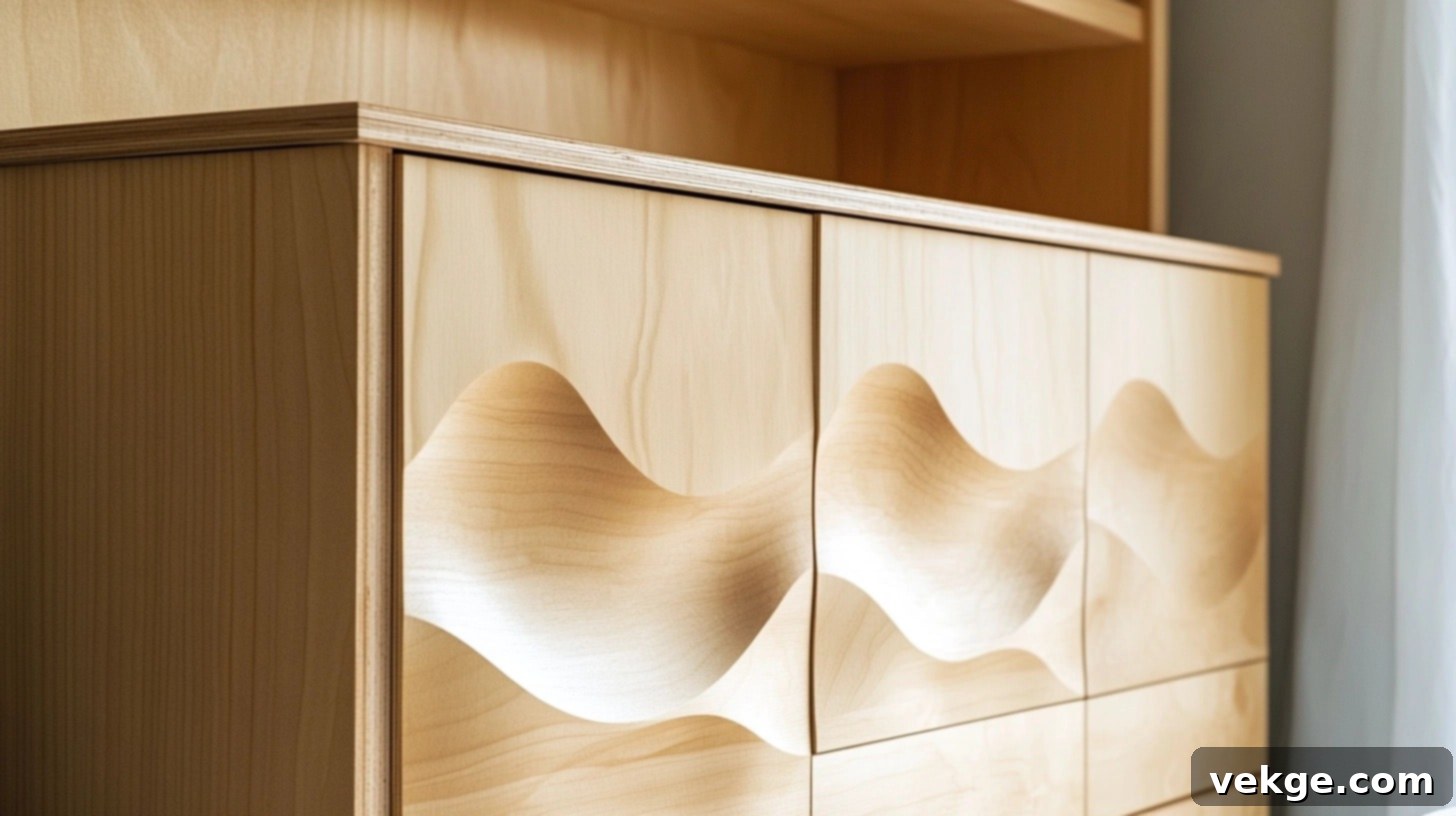Choosing the Best Plywood for Cabinets: An Expert’s Guide to Durable Kitchens and Beyond
Finding the right plywood for your cabinet project can often feel overwhelming, like searching for a hidden gem in a vast lumberyard. I understand that feeling of standing in the aisle, surrounded by countless options, wondering which material will truly deliver the results you envision for your kitchen, bathroom, or any custom build.
But let me assure you, selecting the ideal plywood for your cabinets doesn’t have to be a daunting task. With years of hands-on experience, learning from both successful projects and valuable lessons along the way, I’m here to simplify the process and guide you toward making an informed choice that will stand the test of time.
In this comprehensive guide, we’ll dive deep into the top plywood options available for cabinet construction. You’ll gain a clear understanding of crucial factors like wood grades, core types, and the unique characteristics that make each option suitable for different applications. Moreover, I’ll share practical tips to help you sidestep common buying mistakes, optimize your budget, and ensure your cabinets are built to last.
What Exactly is Plywood and Why is it Ideal for Cabinets?
Have you ever examined a piece of plywood up close? It’s a fascinating material, engineered much like a multi-layered sandwich! Let’s demystify its construction and understand why it’s such a popular choice for cabinetry.
Plywood is manufactured by adhering multiple thin sheets of wood, known as “plies,” together using strong adhesives. What makes this construction particularly effective is that each successive layer is oriented with its grain running perpendicular to the one below it. This cross-graining technique is the secret to plywood’s superior strength and stability.
Let me explain the key components of plywood construction:
- Face Veneers: These are the outermost layers, determining the aesthetic appearance of the plywood. They come in various wood species and grades.
- Core Layers (Plies): The inner section consists of multiple wood layers, typically made from softer wood species, providing bulk and structural integrity.
- Strong Adhesives: Specialized glues bond all these layers together under heat and pressure, creating a single, robust panel.
- Layer Count: Most high-quality, cabinet-grade plywood panels feature 5 to 7 layers, contributing to their impressive durability and resistance to movement.
This ingenious layered design grants plywood significant advantages over solid wood, especially for cabinet applications. The opposing grain patterns effectively counteract warping, shrinking, and splitting, issues that are common with single pieces of solid timber. This inherent stability means your cabinet doors will stay flat, shelves won’t sag, and the overall structure will maintain its integrity for decades.
How Plywood Quality Directly Impacts Cabinet Durability and Longevity
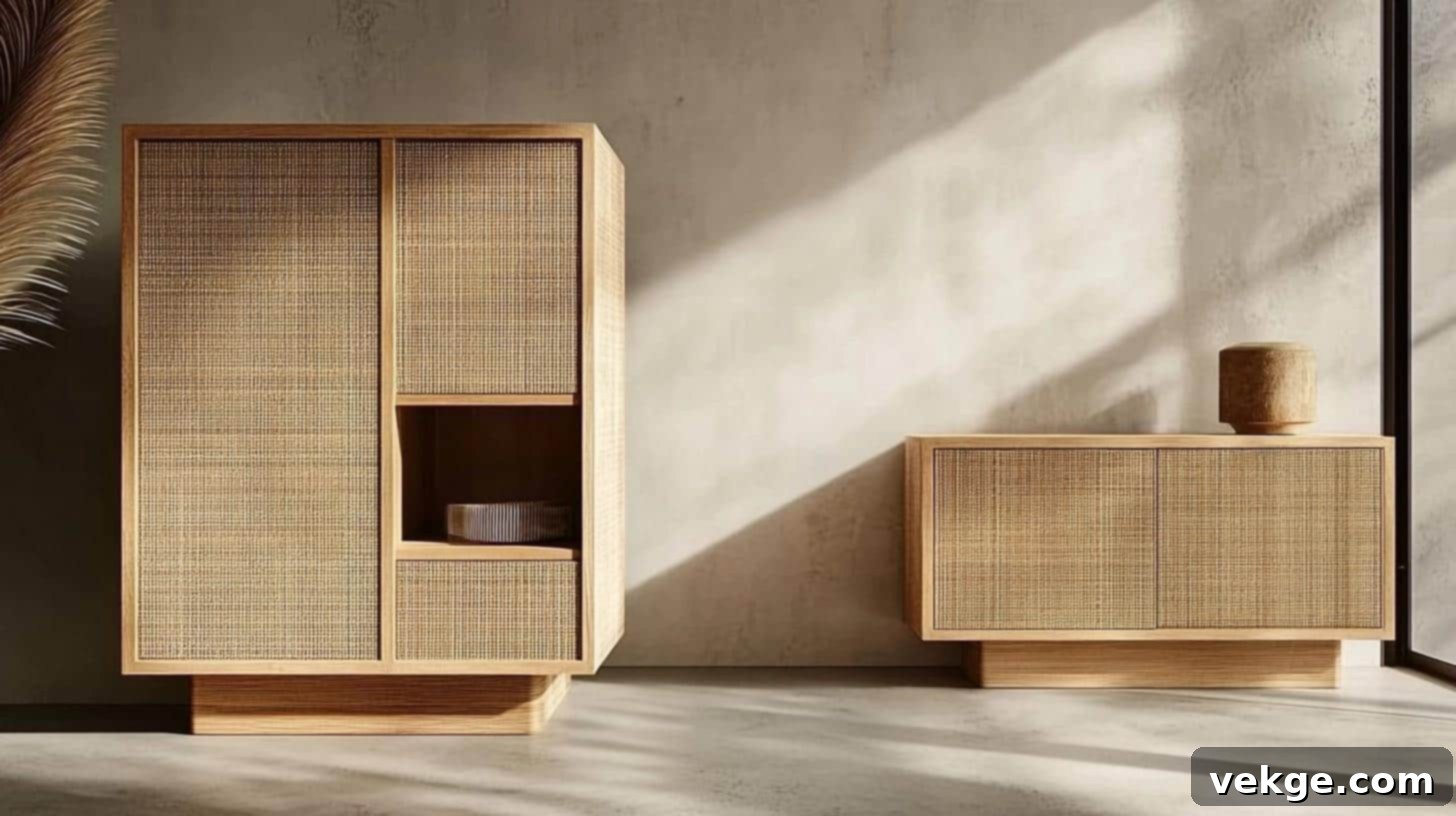
One of the most crucial lessons I’ve learned throughout my career in cabinet making is this: the quality of plywood you select today is the primary determinant of how long and how well your cabinets will perform tomorrow. Skimping on quality here is a common pitfall that often leads to costly repairs and premature wear.
Investing in better quality plywood translates to:
- Minimized Voids: Fewer or no air gaps between the inner layers, which are critical for structural strength and screw retention.
- Consistent Thickness: Uniform thickness across the entire sheet, ensuring a perfectly flat surface and accurate joinery.
- Superior Bonding: Stronger, more resilient glue bonds between each ply, preventing delamination over time.
- Enhanced Surface Integrity: Less likelihood of face veneers peeling, bubbling, or showing imperfections, leading to a much better finish.
- Greater Moisture Resistance: Better quality plywood often uses more durable adhesives and denser plies, offering improved resistance to humidity and incidental moisture.
Conversely, opting for poor quality plywood can manifest in several undesirable ways:
- Sagging Shelves: Weak core plies or voids can lead to shelves bowing under the weight of stored items.
- Loose Hardware: Poor screw-holding capacity, especially in the edges, can result in wobbly doors and drawers.
- Structural Weakness: Areas with voids or delamination become weak spots, prone to cracking under stress or weight.
- Layer Separation: Weak adhesives can cause the plies to separate, compromising the entire panel’s integrity.
- Uneven Surfaces: Inconsistent thickness or warping can make cabinet assembly difficult and result in uneven, unprofessional-looking surfaces.
When I’m personally selecting plywood, here’s what I meticulously inspect for to ensure top quality:
- Smooth, Clean Surface: Look for minimal patches, knots, or repairs on the face veneers. The smoother the surface, the better it will accept finishes.
- Void-Free Edges: Examine the edges closely. High-quality plywood will show tightly packed, consistent layers with virtually no gaps or voids.
- Flatness and Straightness: Hold the sheet up or lay it flat to check for any signs of warping, bowing, or twisting. A flat sheet is crucial for accurate cuts and assembly.
- Consistent Grain: For natural wood finishes, ensure the grain patterns are clear, consistent, and aesthetically pleasing.
- Strong Layer Bonds: Gently try to pry the layers apart at the edges – they should be firmly bonded and show no signs of separation.
Key Types of Plywood Recommended for Cabinetry
1. Hardwood Plywood: Elegance and Strength
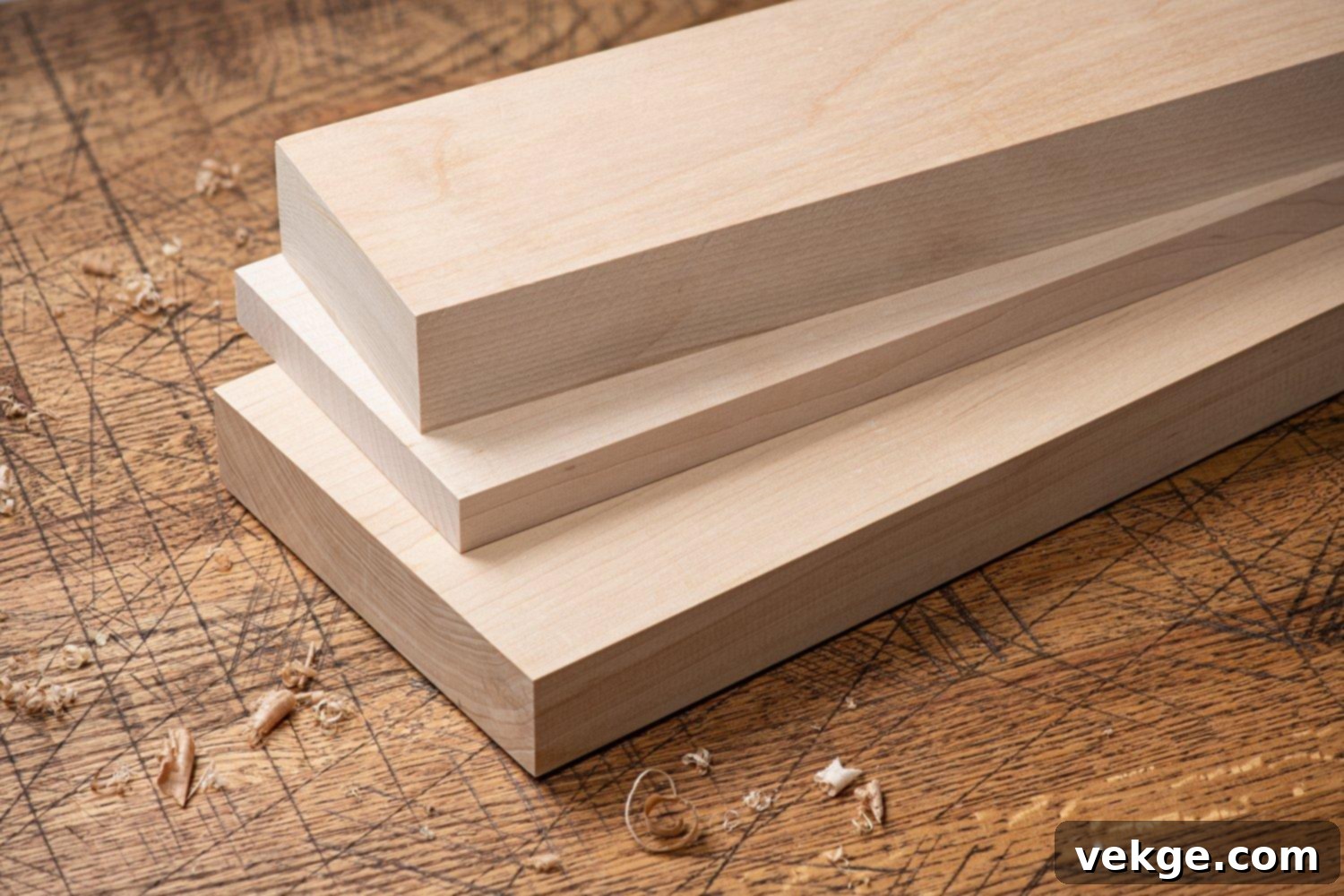
Hardwood plywood is a premium choice that infuses natural beauty and exceptional strength into your cabinets. Unlike standard construction plywood, its face and sometimes back veneers are made from decorative hardwoods, giving it a sophisticated finish. Common species include maple, birch, oak, cherry, and walnut, each offering distinct aesthetic qualities.
- Maple: Provides a smooth, light, uniform finish, perfect for contemporary or minimalist kitchen designs. It’s excellent for painting or a clear, natural look.
- Birch: Offers a fine, subtle grain pattern and outstanding strength. It’s a versatile choice that takes stains well and provides a clean appearance.
- Oak: Showcases bold, distinctive grain patterns that lend themselves beautifully to traditional or rustic kitchen styles. It’s highly durable and resistant to dents.
These beautiful and robust materials excel in various visible and structural components:
- Face Frames: The front-most frame of the cabinet, providing structural integrity and a finished look.
- Cabinet Doors: Offers excellent stability and a superior surface for painting or staining.
- Visible End Panels: The exposed sides of cabinets that require an attractive, finished appearance.
- Interior Shelving: Strong enough to support heavy loads without sagging, while providing a clean interior aesthetic.
2. Baltic Birch Plywood: The Cabinet Maker’s Favorite

Baltic birch plywood is highly regarded by professional woodworkers, and for good reason. Its defining characteristic is its all-birch core, meaning every single ply, from face to core, is made from birch wood. This construction results in an incredibly stable, void-free panel with excellent strength-to-weight ratio and superior screw-holding capabilities.
I’ve consistently found Baltic birch to be the go-to material for crafting high-quality drawer boxes because it remains exceptionally flat and resilient under constant daily use. Its numerous, thin plies create clean, tight edges when cut, making it suitable for exposed-edge designs without needing extensive edge banding. While typically more expensive than standard hardwood plywood, its durability and refined finish often justify the investment, especially for bespoke projects.
3. Marine-Grade Plywood: The Moisture Champion
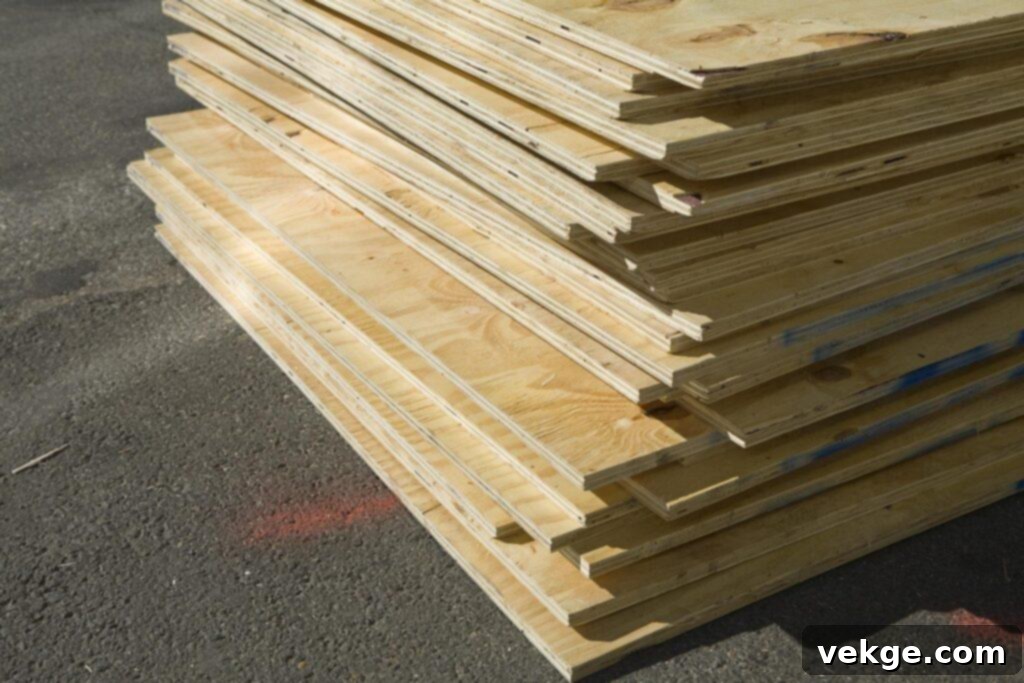
When you’re dealing with environments where moisture is a significant concern, marine-grade plywood is your best defense. While not entirely waterproof, it’s manufactured with highly durable, water-resistant glues (WBP – Weather and Boil Proof) and has a virtually void-free core, which prevents water from seeping in and causing delamination or rot. I strongly recommend its use for specific high-moisture applications.
Consider marine-grade plywood for:
- Under-Sink Cabinets: An absolute must for kitchen sinks where leaks or spills are common.
- Bathroom Vanities: Essential for resisting the humid conditions and potential water splashes found in bathrooms.
- Laundry Room Cabinets: Another area prone to humidity and occasional water exposure.
It typically comes at a higher price point, but the enhanced protection against moisture damage makes it an invaluable investment in these critical areas, significantly extending the lifespan of your cabinetry.
4. Cabinet Grade Plywood: The Workhorse Standard
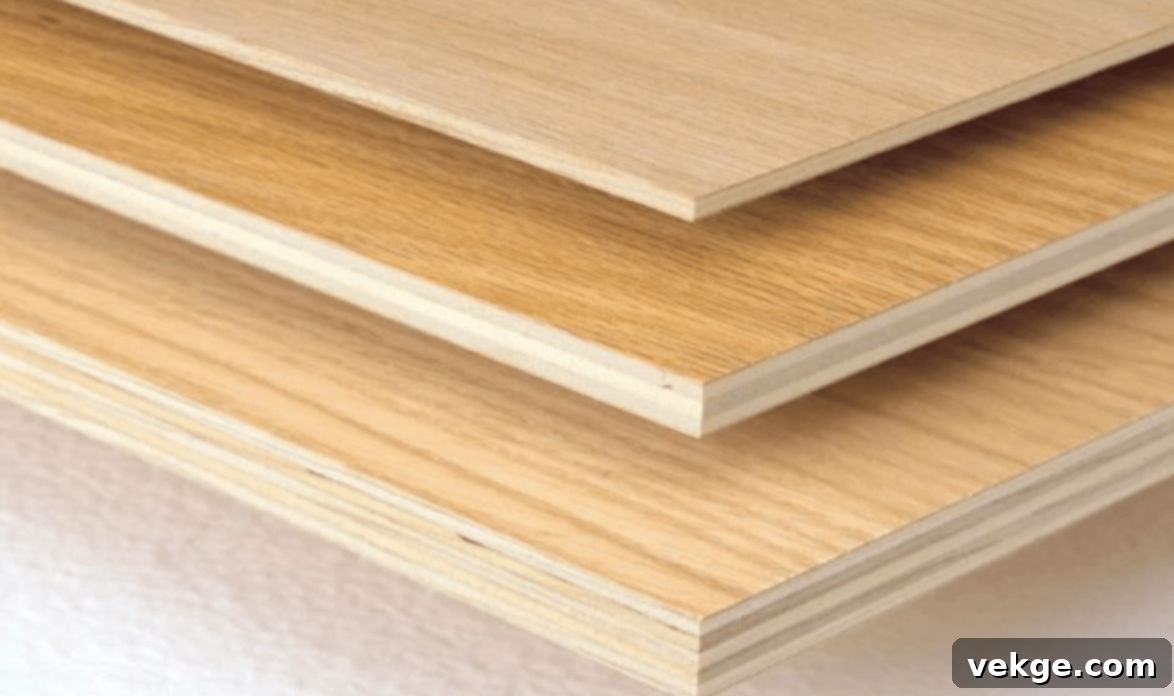
The term “cabinet grade” indicates that the plywood adheres to specific quality standards, making it suitable for furniture and cabinetry. This grading system primarily focuses on the quality of the face and back veneers, as well as the integrity of the core.
When selecting cabinet grade plywood, look for:
- Minimal Surface Defects: The face veneer (the side you’ll see) should be free from significant knots, voids, or patches. Grades like A-1 or B-2 offer excellent, smooth surfaces for finishing.
- Reduced Core Gaps: While not entirely void-free like Baltic birch, cabinet grade plywood should have fewer and smaller gaps in its core layers compared to construction-grade plywood.
- Smooth, Sanded Faces: Both faces are typically sanded smooth, allowing for easier application of paints, stains, or clear coats.
- Properly Graded Veneers: Understanding the A-D grading system is key. An “A” face is nearly perfect, “B” allows minor defects, “C” has more noticeable flaws, and “D” is for utility. For cabinetry, you usually want at least a B-grade face.
I always take the time to inspect both sides and all edges for consistent quality before purchasing. Even if one side will be hidden, its quality contributes to the overall stability and workability of the panel.
Comparing Plywood Thicknesses: 1/2 Inch vs. 3/4 Inch
The thickness of your plywood is a critical decision, directly impacting the strength, stability, and overall feel of your cabinets. Here’s a breakdown of the two most common thicknesses used in cabinet construction:
| Feature | 1/2 Inch Plywood | 3/4 Inch Plywood |
|---|---|---|
| Thickness | 1/2 inch (12.7 mm) | 3/4 inch (19.05 mm) |
| Structural Strength | Medium; adequate for light to moderate loads and less critical components. | Superior; ideal for heavy loads, long spans, and structural support in high-stress areas. |
| Weight | Lighter; easier to handle, cut, and install, reducing overall cabinet weight. | Heavier; more challenging to transport and work with, but provides unmatched rigidity and support. |
| Flexibility | More flexible; suitable for cabinet backs, drawer bottoms, or applications where slight curves might be needed. | Highly rigid; best suited for flat, stable surfaces, ensuring precise joinery and a solid feel. |
| Common Applications | Cabinet backs, drawer bottoms, side panels for lighter cabinets, furniture, wall paneling. | Cabinet boxes (sides, tops, bottoms), shelving, face frames, doors, subflooring, and heavy-duty load-bearing applications. |
| Cost | Typically more affordable per sheet, offering cost savings for less critical components. | Generally more expensive due to increased material and strength, but offers better long-term value for primary components. |
| Durability | Good for moderate wear; may require additional support for larger spans to prevent sagging. | Highly durable; excellent for high-traffic areas, heavy storage, and ensuring the longevity of the cabinet structure. |
For most kitchen and bathroom cabinet boxes and shelving, I almost always recommend 3/4 inch plywood. Its superior strength prevents sagging and provides a much more robust feel to the finished product. Half-inch plywood can be suitable for cabinet backs, especially if they are recessed or reinforced, and for drawer bottoms that won’t bear excessive weight.
Essential Factors to Consider When Choosing Plywood for Your Cabinets
Beyond just the type and thickness, several practical considerations will guide your plywood selection. Let me walk you through the key aspects I always evaluate before starting a cabinet project.
Budget Considerations: Balancing Cost and Quality
Your budget is a significant factor, but it’s important to view it as an investment. The cheapest option upfront can often lead to higher costs down the line due to repairs or replacements.
- Lower-priced plywood: Often comes with more defects, voids, and inconsistent thickness, leading to more waste and labor to achieve a decent finish.
- Mid-range options: Typically offer the best value for most home cabinet projects, providing a good balance of quality, durability, and cost-effectiveness.
- Higher grades: While more expensive initially, they drastically improve the ease of construction, reduce waste, and ensure a much longer lifespan for your cabinets, often saving money in the long run.
- Factor in extra sheets: Always budget for at least one extra sheet of plywood to account for cutting mistakes, unexpected defects, or future repairs.
Room Location: Moisture and Wear Exposure
The environment where your cabinets will reside plays a crucial role in material selection, especially concerning moisture and temperature fluctuations.
- Kitchen Cabinets: Require plywood with good moisture resistance due to steam from cooking and potential spills. Cabinet-grade hardwood plywood or even marine-grade for under-sink areas is recommended.
- Bedroom Wardrobes/Closets: Generally in dry, stable environments, so standard cabinet-grade plywood with an appropriate face veneer is usually sufficient.
- Bathroom Vanities: High humidity and direct water exposure make water-resistant types, like marine-grade plywood, almost a necessity to prevent swelling and delamination.
- Garage Storage: Often subject to wider temperature swings and potential dampness. Tough, durable material that can withstand these conditions is important.
Usage Pattern: Daily Demands on Your Cabinetry
Consider how the cabinets will be used and what kind of stress they will endure daily. Heavy use demands stronger materials.
- Heavy Items Storage: Cabinets intended to hold heavy dishes, books, or appliances absolutely require thicker sheets (3/4 inch) for shelves and structural components to prevent sagging.
- Daily-Use Doors and Drawers: Components that are opened and closed frequently benefit from better grades of plywood (e.g., Baltic birch for drawer boxes) that resist wear, hold hardware securely, and maintain their integrity.
- Less-Used Areas: For utility cabinets or seldom-accessed storage, basic cabinet-grade plywood can be a more economical choice, as long as its quality is consistent.
- High-Traffic Spots: Areas subject to frequent bumps and impacts need robust, strong material that won’t easily dent or chip.
Finishing Plans: Aesthetics and Surface Quality
The intended finish for your cabinets will directly influence the required quality of the plywood’s face veneer.
- Staining or Clear Finish: These finishes highlight the natural beauty of the wood grain, meaning you’ll need plywood with a higher face veneer grade (e.g., A or B grade) that has minimal defects, patches, or color variations.
- Painting: Paint can effectively hide minor surface flaws and inconsistencies, allowing you to opt for a slightly lower, more economical face veneer grade (e.g., C grade or better), provided the surface is still smooth enough for proper paint adhesion.
- Wood Grain Matching: For a cohesive, natural look, especially when staining, consider how well the grain patterns on different plywood sheets will match.
Project Timeline: Efficiency and Workability
The quality of plywood can significantly impact the efficiency and speed of your project.
- Better grades cut faster and cleaner: High-quality plywood with consistent density and fewer voids is easier to cut precisely, resulting in cleaner edges and less splintering.
- Fewer defects mean less waste: You’ll spend less time cutting around flaws and defects, saving material and reducing overall costs.
- Quality sheets speed up building: Consistent thickness and flatness make assembly much smoother, reducing the need for shimming or rework.
- Less time fixing problems: High-quality plywood inherently leads to fewer issues during construction and a more durable end product, saving you precious time and frustration.
Exploring Alternatives to Plywood for Cabinetry
While plywood is an outstanding choice, other engineered wood products can also serve well in cabinet construction, particularly when specific needs or budgets dictate.
1. Medium Density Fiberboard (MDF)
MDF is a popular alternative, crafted from fine wood fibers pressed together with resin under high pressure. Its extremely smooth, uniform surface is virtually flawless, making it an excellent substrate for painting. MDF is also incredibly stable, resisting warping and cracking better than solid wood or even some lower-grade plywood, making it ideal for large, flat cabinet doors and panels. However, remember that MDF is significantly heavier than plywood and has poor moisture resistance; it will swell and disintegrate if exposed to water.
2. Particleboard
Particleboard is made from wood chips, sawdust, and resin, pressed into sheets. It’s generally the most budget-friendly option and provides a flat, stable panel. I often use it for cabinet boxes that will be laminated or veneered, especially in areas where cost is a primary concern. It performs well in dry environments and for light-duty applications, but it’s less durable than plywood or MDF, susceptible to moisture damage, and has inferior screw-holding capabilities.
3. Oriented Strand Board (OSB)
OSB is a structural panel made from large, rectangular strands of wood oriented in specific layers and bonded with resin. While incredibly strong and cost-effective, its rough, textured surface and prominent strand pattern make it generally unsuitable for visible cabinet components. I typically reserve OSB for cabinet backing in utility areas, sub-flooring, or other structural applications where aesthetics are not a concern. It holds screws reasonably well and offers good dimensional stability.
4. High-Pressure Laminate (HPL) Panels
HPL panels are essentially particleboard or MDF cores covered with a decorative, durable laminate surface. These panels offer a finished look right out of the box, saving significant time on painting or staining. I particularly like them for modern cabinet designs where clean lines and low maintenance are desired. Their surface is highly resistant to stains, scratches, and impacts, and they come in a vast array of colors and patterns. However, they require careful edge banding and can be challenging to repair if the laminate surface is damaged.
Conclusion: Making an Informed Choice for Lasting Cabinets
Choosing the right plywood is arguably one of the most critical decisions that will influence the longevity, functionality, and aesthetic appeal of your cabinets. We’ve explored the foundational aspects of plywood construction, delved into how quality directly impacts durability, and meticulously examined various types like hardwood, Baltic birch, marine-grade, and cabinet-grade options.
You now understand why Baltic birch is a preferred choice for robust drawer boxes due to its void-free core, and why marine-grade plywood is indispensable for high-moisture areas like under-sink cabinets and bathroom vanities. We’ve also dissected the differences between 1/2-inch and 3/4-inch plywood, guiding you on where each thickness performs best for optimal structural integrity.
Remember, investing in better plywood today translates directly into fewer headaches and repairs tomorrow. While plywood offers unmatched versatility, don’t overlook the specialized benefits of alternatives like MDF for smooth painted finishes, particleboard for budget-conscious projects, or high-pressure laminate panels for durable, pre-finished modern designs.
Armed with this comprehensive knowledge, you’re well-equipped to confidently approach your next cabinet project. Take these insights with you to your local lumber supplier, ask the right questions, and make selections that align with your specific needs, budget, and desired outcome. And if you’re looking to complete your cabinet design, be sure to check out my guide on cabinet hardware selection for expert advice on choosing hinges, pulls, and slides.
Feel free to leave a comment below about which material you plan to use for your upcoming cabinet build or share any tips you’ve discovered along the way!
